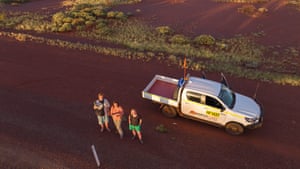Standing looking at the ramshackle old buildings and stockyards on the vast and isolated Mulga Downs station where Gina Rinehart grew up felt a little surreal as the same day she was on the other side of the world in the US celebrating Donald Trump’s inauguration
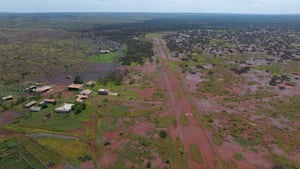
Living on the east coast, mining isn’t something you notice in your neighbourhood. In the Pilbara evidence of mining is in your face everywhere. From the side of the highway to Marble Bar you can see dust rising from the massive dump trucks working at the Roy Hill iron ore mine, and the incongruous pink-painted infrastructure that’s a feature of the mine
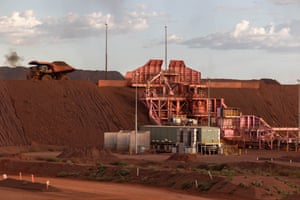
The sun rises over the hills behind Tom Price, the town that supports Rio Tinto’s Mount Tom Price mine. This is the mine Lang Hancock’s estate has been getting royalties from since 1962. In an incredible deal Rio still gives 2.5% from every dollar it earns exporting iron ore from the mine to Hancock Prospecting
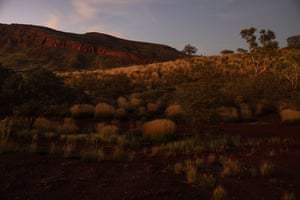
We were told that when she was a child, Rinehart was once saved from drowning in this rain-swollen and muddy creek on Mulga Downs station by an Aboriginal boy named Greg Tucker
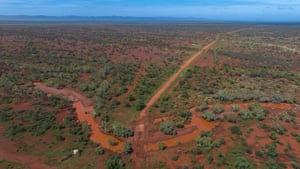
The road is now closed to the former asbestos mining town of Wittenoom. Being a massive Midnight Oil fan I can sing all the lyrics to Blue Sky Mine but my first real exposure to what happened there was as a young press photographer, meeting a terminally ill former mine worker who needed to wear an oxygen mask to help him breathe. He was taking out a compensation claim for his illnesses against CSR, which bought the mine from Hancock and his business partner in the 1940s
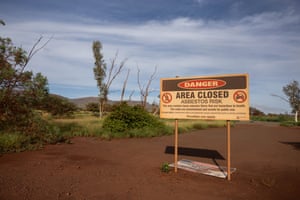
Sunrise on another warm Pilbara morning at the Auski Roadhouse. The business is a hub for truckies and traffic management crews, open early until late and offering surprisingly good, fresh food for somewhere that feels like it’s in the middle of nowhere. We chatted to the friendly crew of a traffic management convoy, one of whom laughed when we said why we were in WA and made, for me, the most memorable quote of the trip: ‘Aunty Gina, she looks after me’
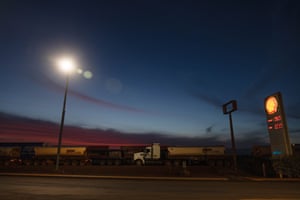
The varied yellow and green colours of the spinifex contrasting with the red rocks is surprisingly beautiful
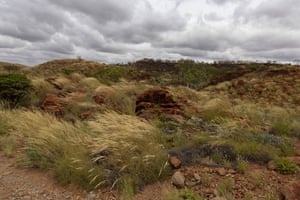
A truck sends up a dust cloud as the sun sets behind Mount Whaleback mine in Newman. Opened in 1968, it’s the world’s largest single-cut iron ore mine. It used to be a mountain 350 metres above the surrounding plain – now it’s 400 metres below the level of that same plain
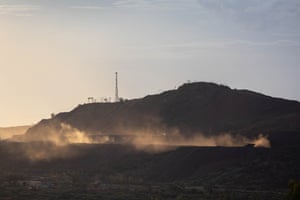
Banjima traditional owner Juliet Tucker at Wirrilimarra, known as ‘the block’ – part of Mulga Downs station that has been given to traditional owners. She liked that the Wittenoom Ranges were behind her as she posed for the portrait because that’s where her family is from
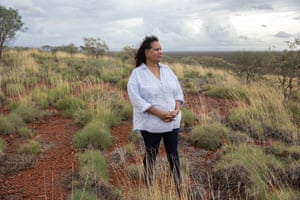
The sun was setting and, with the temperature close to 40C, the drone wasn’t happy but it still managed to get high enough to peek into the edge of the open-cut Roy Hill mine. The size is overwhelming but this is actually just one small part of the vast project
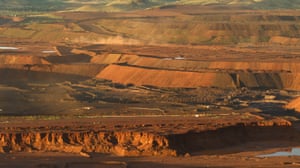
The Pilbara landscape always offers a beautiful colour palette but, after rain, the spinifex and hills along the Great Northern Highway were greener than usual. Our flight plans had to be changed due to a cyclone off Port Hedland and the locals told us it was wetter than they’d seen it in years
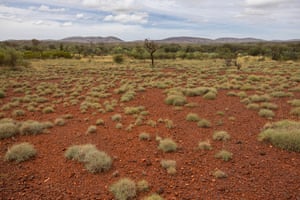
January is the off-season in Karijini national park, so when we were there only one gorge was open. Even the visitor centre was closed and we felt as though we were the only people in the park as we walked under the ghost gums and the red rocks of Nhamarrunha (Kalamina Gorge)
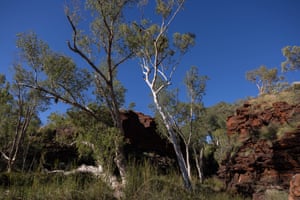
Slim Williams, another Martu man, sits for a portrait at the Aboriginal Males Healing Centre in Parnpajinya. We sat with a group of men in the shade of the healing centre and talked. Their emotions were raw as each spoke from the heart. Looking back at the portraits I can see their sadness
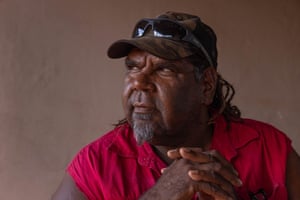
The ancient Wanna Munna petroglyphs are down an unmarked rough track about 75km from Newman. The screeching of wild budgies was the only sound as we explored down the gorge. Everywhere you look more carvings are visible – people, animals and symbols. It’s magical
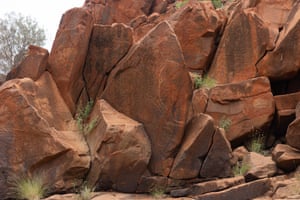
As the sun started to go down at the end of a long hot day, the shadows cast from the Roy Hill mine bridge over Marble Bar Road looked like a dinosaur’s shadow and was strangely spectacular
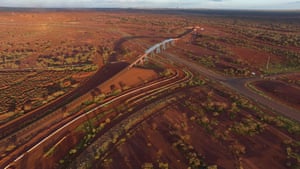
Driving through the Pilbara and having read Tim Winton’s latest novel, I grappled with the idea of how much wealth comes from unrecognised colonial exploitation. The former chief executive of Oxfam Australia Lyn Morgain said at the end of episode three: ‘Whatever your views might be as to who owns those resources, what is unquestionable is that they belong with Australians, our community and in many cases with the traditional owners’
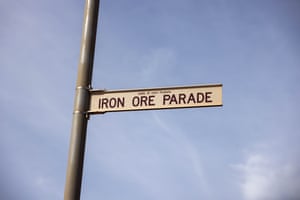
The sweaty podcast team – Joe Koning, me and Sarah Martin – as the sun starts to set on our last day in the Pilbara
